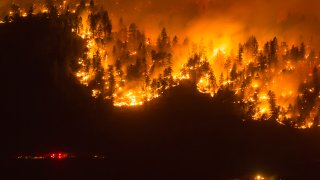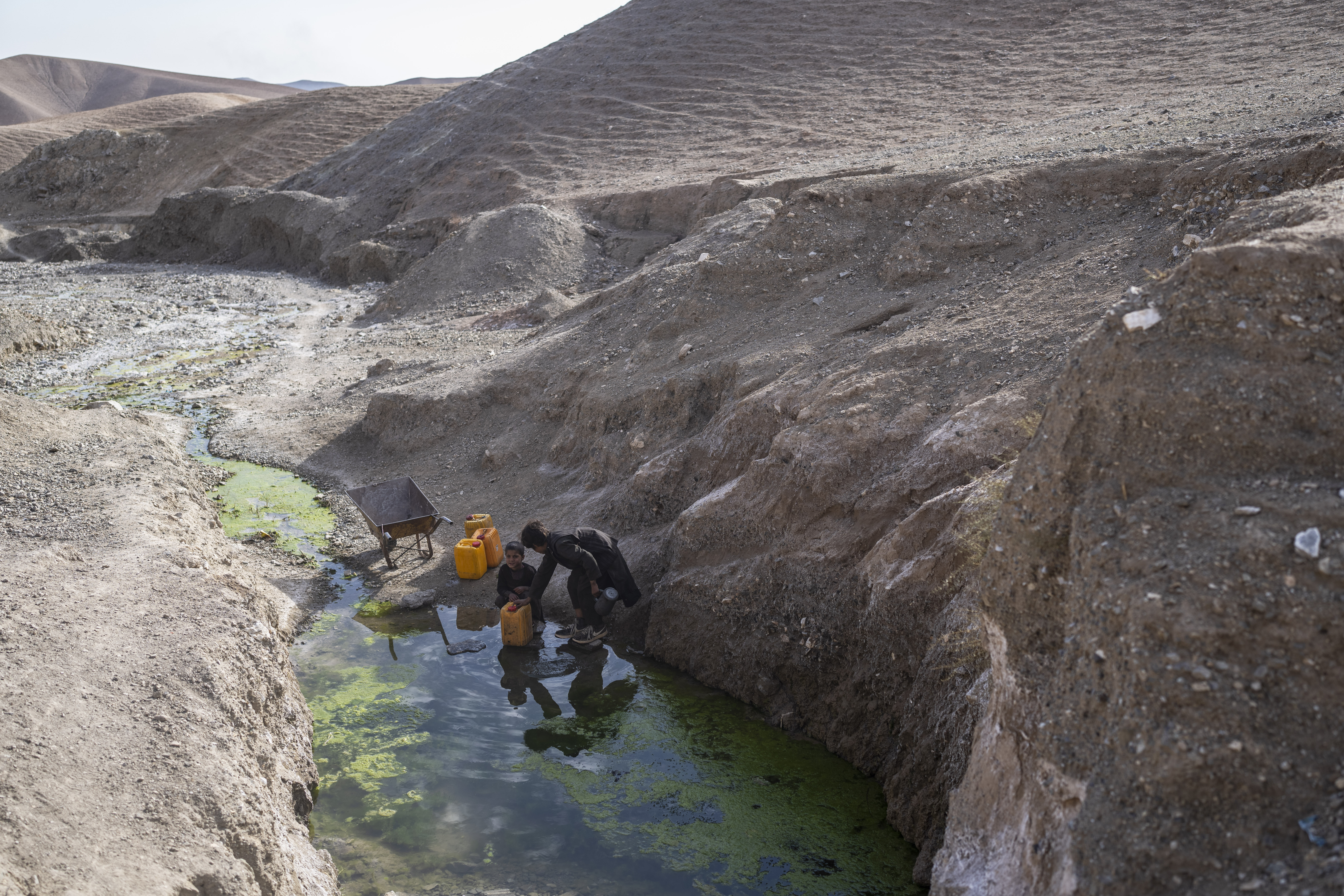
Firefighters kept wildfires at bay near the capital of Canada's Northwest Territories as well as a threatened city in British Columbia, though no one claimed victory as forecasters warned that drier and windier weather was coming.
For Saturday at least, the weather was milder, providing some help for fire teams battling to contain the flames of Canada's worst fire season on record that destroyed structures, fouled the air with thick smoke and prompted evacuation orders for tens of thousands of residents.
Officials said a huge wildfire again had been kept from advancing closer than 15 kilometers (9 miles) to Yellowknife, the capital of the Northwest Territories that was left virtually empty when nearly all of its 20,000 residents fled for safety.
“We’re by no means out of the woods yet,” Mike Westwick, wildfire information officer for the city, told The Associated Press. “We still have a serious situation. It’s not safe to return.”
To the south, in British Columbia, raging flames were also kept away from Kelowna, a city of 30,000 people about 150 kilometers (90 miles) north of the United States border.
The Kelowna fire is among more than 380 blazes across the province, with 150 burning out of control. The blaze near Yellowknife is one of 237 wildfires burning in the Northwest Territories.
At a Saturday evening news conference, Shane Thompson, the minister of environment and climate change for the Northwest Territories, said the fires near Yellowknife had not grown very much in the past few days thanks to breaks in the weather.
U.S. & World
“But I want to be clear, a little bit of rain doesn’t mean it’s safe to come back home,” he said. Others warned that incoming hot weather would make the battle more challenging.
Yellowknife Mayor Rebecca Alty encouraged residents to stay away to ensure their safety and help with firefighting efforts. She assured people that patrols were monitoring streets and homes to protect against looting.
Get a weekly recap of the latest San Francisco Bay Area housing news. Sign up for NBC Bay Area’s Housing Deconstructed newsletter.
The city has become a virtual ghost town since residents fled following an evacuation order issued Wednesday evening. Long caravans of cars choked the main highway and people lined up for emergency flights to escape the blaze. The last 39 hospital patients were flown out Friday night on a Canadian Forces plane, officials said.
On Saturday, officials said the escape route out of Yellowknife was safe, for the time being. About 2,600 people remained in town, including emergency teams, firefighters, utility workers and police officers, along with some residents who refused to leave.
Charlotte Morritt was among those who left Thursday, reaching that decision because of the unbearable smoke that she feared would be unhealthy for her 4-month-old son.
Morritt, a journalist with the Aboriginal Peoples Television Network, and her son took an evacuation flight some 1,500 kilometers (950 miles) west to safety in Whitehorse, Yukon, while her partner stayed behind to monitor their property and help create firebreaks and fight fires.
“We knew it was only a matter of time,” said Morritt, who had been following media updates and satellite images of the approaching wildfires.
Air tankers dropped water and fire retardant to keep the flames from Yellowknife. A 10-kilometer (6-mile) fire line was dug, and firefighters deployed 20 kilometers (12 miles) of hose and a plethora of pumps.
Canada has seen a record number of wildfires this year that have caused choking smoke in parts of the U.S. All told, there have been more than 5,700 fires, which have burned more than 137,000 square kilometers (53,000 square miles) from one end of Canada to the other, according to the Canadian Interagency Forest Fire Centre.
All of British Columbia was under a state of emergency Saturday. About 35,000 people had been ordered to evacuate wildfire zones across the province and an additional 30,000 people were under an evacuation alert, meaning they should be prepared to leave, Premier David Eby announced.
Eby told reporters Saturday that the situation was “grim” and warned that the “situation changes very quickly.”
He said he was restricting non-essential travel to fire-affected areas to free up accommodations such as hotels, motels and campgrounds for displaced residents and firefighters.
Ian Stewart and his wife made the “anxiety-producing” decision Friday to evacuate Kelowna with their 4-year-old border collie and drive 335 kilometers (210 miles) to the British Columbia town of Clearwater.
“The smoke was really oppressive and there were big chunks of ash falling everywhere,” he said Saturday. They packed a couple of suitcases, passports, laptop computers and dog food, and drove in bumper-to-bumper traffic to escape.
A shift in the wind carried smoke and haze from British Columbia into the Seattle area on Saturday, said Dustin Guy, a meteorologist with the National Weather Service. The Puget Sound region was just recovering from record heat, and air quality could reach unhealthy levels Saturday night through Monday, Guy said.
___
Sharp reported from Portland, Maine, and Bellisle reported from Seattle. Associated Press journalist Andrea Thomas in Chicago contributed to this report.



